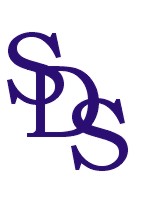or Home
or About SDS
or In Print
or Technology
or Contact Us
|
- Some ++Dumb Relics in JAVA
- JAVA evolved from the C programming
language. Although JAVA eliminated some of the inherent problems
and limitations in C, some of the complexities and idiosyncrasies were retained. One of these is the ++ (and +, --, - ) syntax
for incrementing or decrementing counters. This article looks
ate a number of situations where this syntax may produce results
that are not what you would intuitively expect.
- JAVA Report January
2000
- Testing Flow for Year 2000 Validation
- Testing is 60% to 70% of the effort
[and cost] of Y2K projects. Yet the testing process has been
decimated or diluted in most IS organizations with the cutbacks
and "streamlining" of organizations over the past 10
to 15 years. The result is that many organizations have to go
back to school to learn how to test effectively and then how
to do it efficiently. The testing process is explained to guide
those responsible for the testing effort to make the process
work while being able to control the costs.
- Year/2000 Journal November/December
1998
- The [Y2K] Testing Monster
- Year 2000 remediation is followed by a testing process which
is often much more extensive and expensive than was planned for
in the initial project plans. This is because testing has been
somewhat forgotten in the past ten years and is easy to underestimate.
But there are some basic processes and procedures that, if followed,
can make a significant impact to the amount of time and money
that is spent to fully test your systems.
- Y2K Advisor October
1998
- Making Encapsulation Viable
- Encapsulation is a Year 2000 solution which has actually
been around for 30 years. The process is to isolate either programs
or data from changes to minimize the impact to repair those systems.
If data is encapsulated, files are not changed. If programs are
encapsulated, then code is not altered. Both has a particular
appeal to lessen the impact of Year 2000 remediation on the overall
IS structure. But is Encapsulation a viable solution - the answers
are here.
- Year/2000 Journal July/August 1998
- Year 2000 Basic Rules
- Year 2000 repair projects must decide which approach to take
- modifying data or modifying programs or both. Each approach
has its pros and cons to be considered. Since this decision will
impact support of these systems in the future, it is best to
perform the evaluation before implementing a solution that may
just have to be redone in a few months after the "heat of
the battle" has died down.
- Enterprise Systems Journal
June 1998
- Saving The Bacon: Avoid Getting
Burned by Delays in year 2000 Testing
- Year 2000 testing is much bigger and
complicated than most organizations want to believe or acknowledge.
The critical issues are understanding the process of testing
and implementing a realistic plan that will allow testing to
be successful. Although this may sound very easy, it is surprising
how many Year 2000 plans are "significantly behind"
in the testing process.
- Year 2000 Journal May/June 1998
- Basic Year 2000 Rules
- What is the primary concern with Year
2000 projects - trying to get done in time. The emphasis has
been shifting over the past few years from wome very philosophical
objectives to more practical ones to messages of plain survival
instinct. But just what impact do changes have on systems. This
discussion looks at what impact is made with the various Y2K
methodologies and what are the consequences. All too often, the
impact of methodologies is not fully understood and the resulting
surprises effect project completion.
- Enterprise System Journal June 1998
- Writing an Ageing Utility
for Year 2000 Testing
- Data ageing is the best method to generate
data which can be used to test Year 2000 changes. A data ageing
utility makes the process of ageing dates in files possible because
the volume and complexity of the data is just to much to handle
manually or to create from scratch. This article outlines the
requirements for ageing date values and provides a down-loadable
utility (DATEFIX version 1.00) that can age data files on IBM
mainframe systems.
- Technical Support November 1997 File: datefix1.exe (approx 60K)
- Date Impact Analysis
- Date Impact Analysis provides Year 2000 project planning
to be managed in an orderly and regimented manner so the optimal
value is obtained from the process. As time rapidly approaches
when systems will fail or generate incorrect results, a systematic
analysis of the potential problems in each system is necessary
to properly schedule the scarce Year 2000 resources to fix or
replace those systems or recognize that systems are not in danger
or the impact is only minimal.
- Technical Support October 1997
- Ageing Data Files for Year 2000
Testing
- Testing Year 2000 changes presents the most challenging and
costly part of the process to renovate systems for the century
rollover. In fact, old system or new systems all face the same
challenge to certify that the processes are fully functional
with multi-century dates. Ageing dates in data files provides
a methodology that make testing more effective because the data
is known and the results can either be duplicated or easily extrapolated
from earlier regression test results.
- Enterprise Systems Journal July 1997
- Three Centuries: Another Year/2000
Dilemma
- Most computerized systems were designed to deal with very
short time spans. That partially explains why the change in century
is causing such havoc with logic and results. But for those cases,
which are not that uncommon, the two century solution of simply
windowing the year into a 100 year range will just not suffice.
There will be dates which can span three centuries - 189x through
200x - which will create severe problems in these systems for
the next few years. Solutions must deal with these situations
or there could be significant processing problems as the century
rollover approaches.
- Year 2000 Journal June 1997
- Reducing Testing Effort for
Year 2000 Projects
- Year 2000 correction and testing efforts depend heavily upon
the number of date fields, the number of data files, the volume
of data in those files and whether data files are input-only
or updates during processing. Date fields effect the code and
file changes. Data files and data volume effect the testing process
and resources required. Type of file access effects regression
testing and dictates data which must be saved and validated for
correctness. This article discusses how to use SMF data to limit
the files that must be captured. Input files are required to
run a process and output, or updated, files must be verified
for correctness. By limiting which files are captured and compared,
resources and time are saved. Another process also analyzes the
volume of data which is involved for each system (by dataset)
so resources can be allocated. Code is provided (via download)
to perform these functions using an assembler language program
and several CLISTs (CLISTs are an IBM MVS language which runs
under TSO or in batch).
- Year 2000 Journal May
1997 File: y2k_dsn.job (approx 56K bytes)
- YEAR 2000 Analysis: Gaining Maximum
Value from the Process
- Projects to correct the problems which will result from the
century rollover were unexpected expenses to many companies.
As long as this effort must be expended, it seems logical to
get the maximum value from the dollars being spent to examine
almost every aspect of each system. This articles walks through
the various Year 2000 solutions and offers some suggestions about
selection of a solution methodology and about collecting all
of the knowledge into a knowledge-base to be retained after the
Year 2000 project is done and gone.
- Enterprise Systems Journal
March 1997
- Locating Wasted DASD Space
- Everyone assumes that datasets are allocated efficiently
because of the BLKSIZE=0 option in JCL. But many datasets have
allocations hard coded with less than optimal blocking or have
migrated from other devices or device types. This CLIST uses
data obtained in ISPF option 3.4 to point out datasets which
are not optimally allocated.
- Technical Support Nov 1996 File: waste_sp.asc (approx 4,000 bytes)
- VSAM File Initialization
Code
- VSAM files must be initialized before they can be read or
updated. The VSAMINIT utility program will initialize any VSAM
(KSDS, RRDS or ESDS) file and thus eliminate the need for special
JCL or separate programs for each file.
- Technical Support Sept 1996 File: vsaminit.asm (approx 34,000
bytes)
-
- Sharing DB2 Application Code
- Intercepting DB2 application calls to allow one module to
execute in any environment (CICS, IMS, Batch or Call Attach).
Also includes support for VS/COBOL and COBOL-II mixed mode support.
- IDUG Solutions Journal Jan 1996
- Managing Data Tables in CICS
- Data table manager routine coded in COBOL to store data in
CICS using Temporary Storage Queues.
- Technical Support May 1995 File: cics_tsq.cob (50,000 bytes)
- Printing via the JES Spool
in CICS
- A simple interface coded in COBOL to print files from CICS
to JES network printers using the JES SPOOLxxxx functions.
- Technical Support April 1995. File: cics_prt.cob (approx 35,000
bytes)
- Faster Queries with SOUNDEX Strings
- Using SOUNDEX to improve relational database query performance.
- DBMS Magazine
February 1995
- A Simplified Query Process
- Developing a method for balancing performance and functionality
for multiple selection criteria queries using static SQL.
- Data Base Programming and Design September 1994
- Retaining Historical Data
- Retaining historical data in a relational database to provide
added functionality for point-in-time processing. An implemented
methodology is discussed for a corporate database model.
- Enterprise Systems Journal July 1994
-
MORE ANCIENT WRITINGS
Evaluating Automated Systems: Under the Microscope
NaSPA S/370-390 Operating Systems Solutions June1994
COBOL-II Pointers NaSPA S/370-390 Operating Systems
Solutions May 1994
Replication: Answering the Call Database Programming
and Design Apr 1994
Optical Storage and the Mainframe Technical Support
Dec 1992
CICS Development on the PC Technical Support
Nov 1992
WTO Loop Isolation: Preventing a System Outage Enterprise
Systems Journal July 1992
Data Compression Considerations Technical Support
July 1992
IBM's MVS Linkage Editor Utility (and Load Modules)
Technical Support May 1992
MVS Subtasks Under CICS Enterprise Systems Journal
May 1992
The Sort Termination Exit and Hipersorting Technical
Support May 1991
REXX for Systems Programmers Technical Support
Dec 1990
Protecting Deleted DASD Data: A Simple Solution Enterprise
Systems Journal Nov 1990
Automated Backup: Intelligent Selection Reduces Risks
and Resources Disaster Recovery Journal Jun-Jul-Aug
1990
Optical Disk Technology: Charting Its Growth Path
Unisphere May 1990
Sorting Methodologies Mainframe Journal May
1990
Synchronous and Asynchronous Processing Technical
Support Apr 1990
Interrogating the Eligible Device Table (EDT) Mainframe
Journal Nov 1989
Mainframe Optical: Here to Stay? or Here to Stay!
Inside DPMA Oct 1989
Sort Exit Processing Mainframe Journal Sept
1989
Modifications to a DBMS: The Optical Connection Technical
Support Sept 1989
DB2 Data Base Estimator Tools for the PC Database
Programming and Design Aug 1989
A Survey of Optical Disk Technology Mainframe Journal
May 1989
IPL-Text for IBM Mainframe Systems Technical Support
Nov 1988
A DSS (Development Support System) for DB2 Program Development
Explain Vol III 1988
Dynamic ISPF Libraries Specification Technical
Support Aug 1988

|

